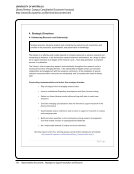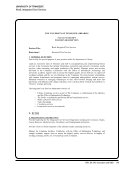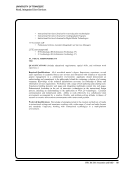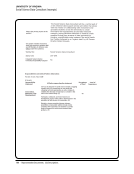44 · Survey Results: Survey Questions and Responses
The staff implementer frequently has opportunities to present their work at a conference.
There is not a specific library award for innovation, but there are awards for which innovation is a contributing factor,
specifically the Anschutz-Budig award (http://www.lib.ku.edu/awards/anschutz-budig.shtml) and the Rosenblum award
(special initiative category, http://www.lib.ku.edu/awards/rosenbloom.shtml).
LIBRARY INNOVATION: ASSESSMENT
18. Has your library assessed or evaluated the outcomes of this innovation? N=44
Yes 17 39%
Not yet, but we plan to 22 50%
No, and we have no plans to 5 11%
If yes or you plan to, please indicate the assessment method(s). Check all that apply. N=39
Collection and analysis of data on use of innovative services or products 26 67%
User survey 20 51%
Interviews with individuals who use innovative services or products 20 51%
Report submission/review/decision process 14 36%
Interviews with focus groups that use innovative services or products 13 33%
Other assessment method, please briefly describe 15 39%
A Library Innovation Fund grant supported an earlier phase of the Technology Prototyping Service. The PI prepared a
report and assessment of the use of funds to recruit students with diverse backgrounds to the service.
Assessment was of the productivity of using crowdsourcing vs. assigning to a student assistant or intern. Findings were
that crowdsourcing was not more productive but generated other benefits, primarily in terms of campus recognition and
community relationship building, e.g., several local TV channels covered the project on the evening news.
Citation analysis of archived web content
Collection of online comments and recommendations
Continuous review and evaluation, networking to share/have ideas challenged, conference presentations to share ideas/
solicit feedback
Customer feedback: We continue to expand our digitization program with the USHS, so they like the work we do.
Informal feedback with users during presentations, demonstrations, transcribe-a-thons, and via email
Pre- and post- skills tests, feedback from campus and community partners
Research projects and grants that utilize technologies and space, partnerships with campus and external entities,
teaching impact
Seating sweeps
Since this has been a series of components, various assessment techniques used. Data capture and analysis common to
all.
The staff implementer frequently has opportunities to present their work at a conference.
There is not a specific library award for innovation, but there are awards for which innovation is a contributing factor,
specifically the Anschutz-Budig award (http://www.lib.ku.edu/awards/anschutz-budig.shtml) and the Rosenblum award
(special initiative category, http://www.lib.ku.edu/awards/rosenbloom.shtml).
LIBRARY INNOVATION: ASSESSMENT
18. Has your library assessed or evaluated the outcomes of this innovation? N=44
Yes 17 39%
Not yet, but we plan to 22 50%
No, and we have no plans to 5 11%
If yes or you plan to, please indicate the assessment method(s). Check all that apply. N=39
Collection and analysis of data on use of innovative services or products 26 67%
User survey 20 51%
Interviews with individuals who use innovative services or products 20 51%
Report submission/review/decision process 14 36%
Interviews with focus groups that use innovative services or products 13 33%
Other assessment method, please briefly describe 15 39%
A Library Innovation Fund grant supported an earlier phase of the Technology Prototyping Service. The PI prepared a
report and assessment of the use of funds to recruit students with diverse backgrounds to the service.
Assessment was of the productivity of using crowdsourcing vs. assigning to a student assistant or intern. Findings were
that crowdsourcing was not more productive but generated other benefits, primarily in terms of campus recognition and
community relationship building, e.g., several local TV channels covered the project on the evening news.
Citation analysis of archived web content
Collection of online comments and recommendations
Continuous review and evaluation, networking to share/have ideas challenged, conference presentations to share ideas/
solicit feedback
Customer feedback: We continue to expand our digitization program with the USHS, so they like the work we do.
Informal feedback with users during presentations, demonstrations, transcribe-a-thons, and via email
Pre- and post- skills tests, feedback from campus and community partners
Research projects and grants that utilize technologies and space, partnerships with campus and external entities,
teaching impact
Seating sweeps
Since this has been a series of components, various assessment techniques used. Data capture and analysis common to
all.
































































































































































































